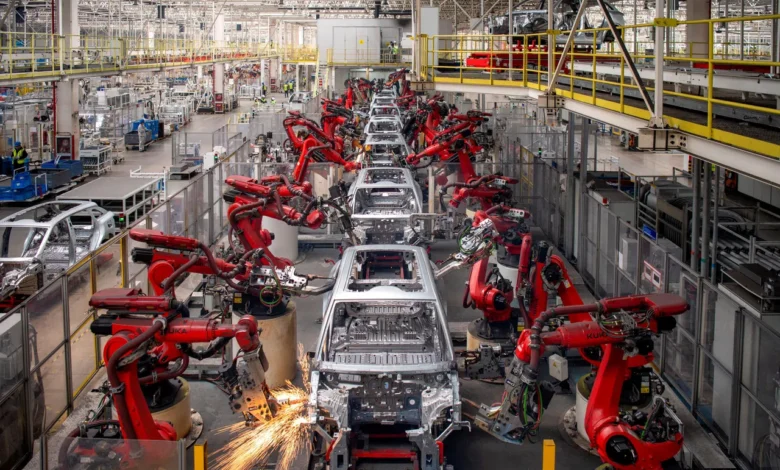Subsidies and price cuts drive China’s car sales recovery in May

CHINA’S vehicle sales recovered in May from the previous months, thanks in part to government subsidies. Retail sales of passenger cars dropped 1.9 per cent from a year earlier to 1.7 million units in May, but grew 11 per cent from April, the China Passenger Car Association (CPCA) said on Tuesday (Jun 11).
The May results significantly improved from April sales, which declined 5.7 per cent year on year and 9.4 per cent from March.
Government subsidies for replacing old cars with new ones introduced at the end of April has sparked significant consumer demand. Car buyers can now receive subsidies of 7,000 yuan (S$1,304) for updating their fuel cars or 10,000 yuan for purchasing new energy vehicles (NEVs).
Meanwhile, a fierce price war has gripped the automotive market in 2024. With the slowing demand for battery-powered vehicles driving up competition, electric vehicle (EV) makers are discounting and speeding up the launch of new models. BYD intensified the price war by cutting the prices of many popular models in February which led others to follow.
From February to the end of April, the number of models involved in price reductions nearly matched the total for all of 2023. Some popular models saw price cuts of nearly 20 per cent, causing many consumers to delay purchases in anticipation of further discounts. The trade-in subsidy policy has incentivised some of these hesitant consumers to act.
The adjustment of the preferential purchase tax policy for NEVs has also fuelled the minicar market. Under new requirements released in December by the Ministry of Industry and Information Technology, the Finance Ministry and the State Taxation Administration, pure electric cars should have a driving range of at least 200 kilometres per charge to be eligible for the purchase tax exemption, up from 100 km in the previous requirements released in 2017.
GET BT IN YOUR INBOX DAILY

Start and end each day with the latest news stories and analyses delivered straight to your inbox.
This change, set to take effect on Jun 1, 2024, has led to a rush of consumers buying minicars before the new threshold is enforced. In May, the wholesale of A00 class EVs reached 81,000 units, marking an 11 per cent year-on-year increase and a 5 per cent month-on-month rise. These A00 models are typically minicars priced under 100,000 yuan.
However, overall passenger car sales in May declined year on year, primarily due to sluggish fuel vehicle sales. Retail sales of fuel vehicles dropped to 910,000 units, a 23 per cent year-on-year decrease, despite a 6 per cent month-on-month increase. In contrast, the retail volume of NEVs surged to 800,000 units, a 38.5 per cent year-on-year increase and an 18.7 per cent month-on-month rise, the highest monthly figure for 2024.
The persistent decline in fuel vehicle sales has hindered the overall recovery of the car market. Policies such as the trade-in scheme have provided some support for fuel vehicle purchases but have not completely offset the downturn, the CPCA said.
China exported 378,000 cars in May, up 23 per cent in the year but lower than the record-high set in April. Exports of new-energy cars dropped 4 per cent in May compared with a year earlier.
The European Union will impose extra tariffs on electric cars shipped from China as at next month, taking levies to as much as 48 per cent.
The tariffs will likely cut imports from China by a quarter, said Moritz Schularick, president of Germany’s Kiel Institute for the World Economy.
At a market analysis meeting on Tuesday, Cui Dongshu, Capa secretary general Cui Dongshu noted that while the EU’s concerns about the influx of Chinese NEVs are understandable, Chinese companies are expected to adopt localised strategies in Europe to mitigate potential tariffs and support the development of local industries. CAIXIN GLOBAL

